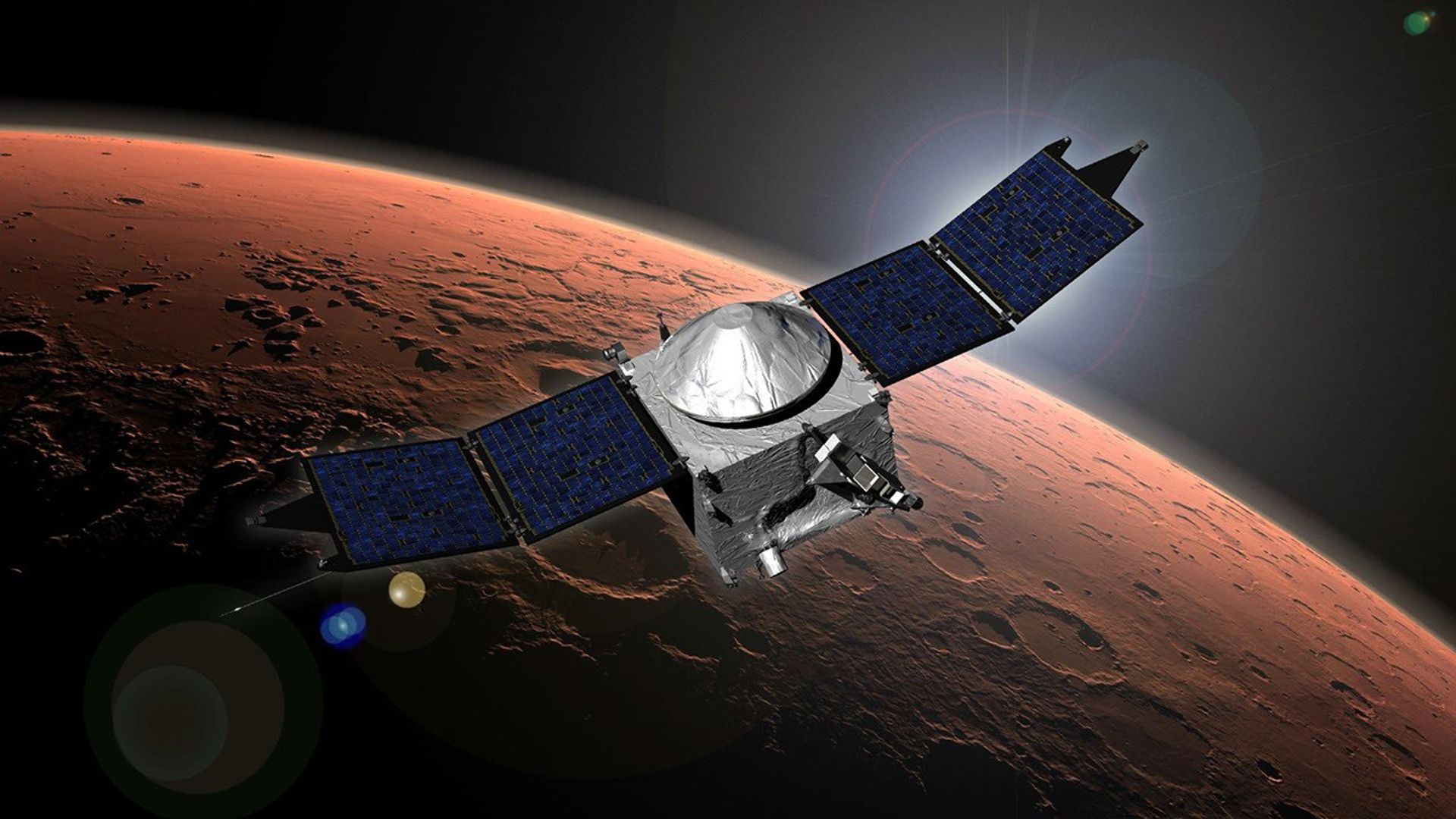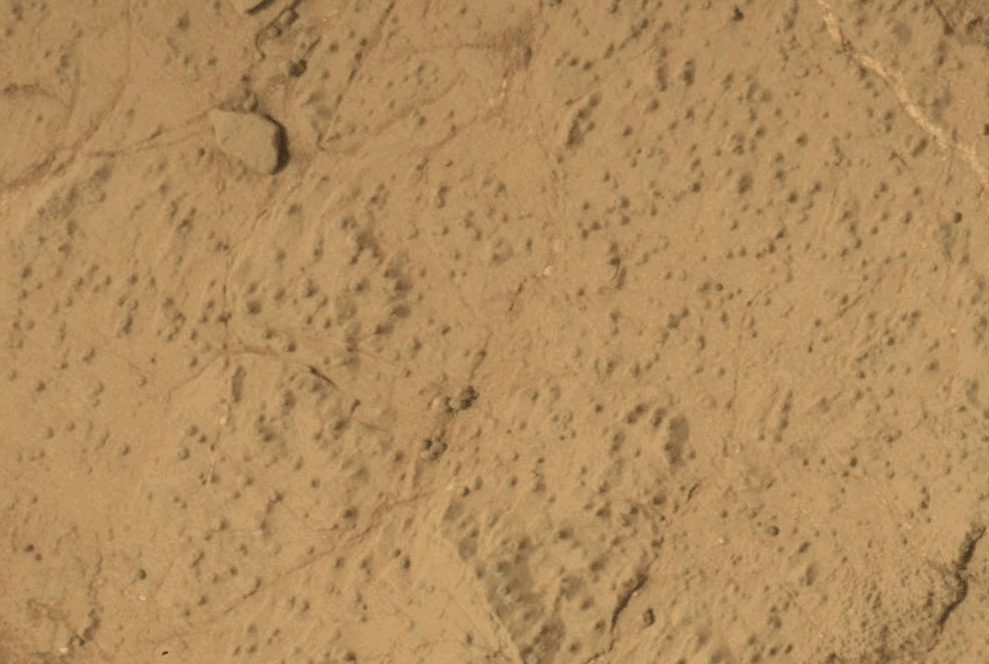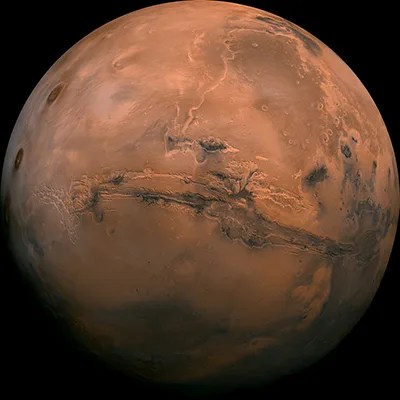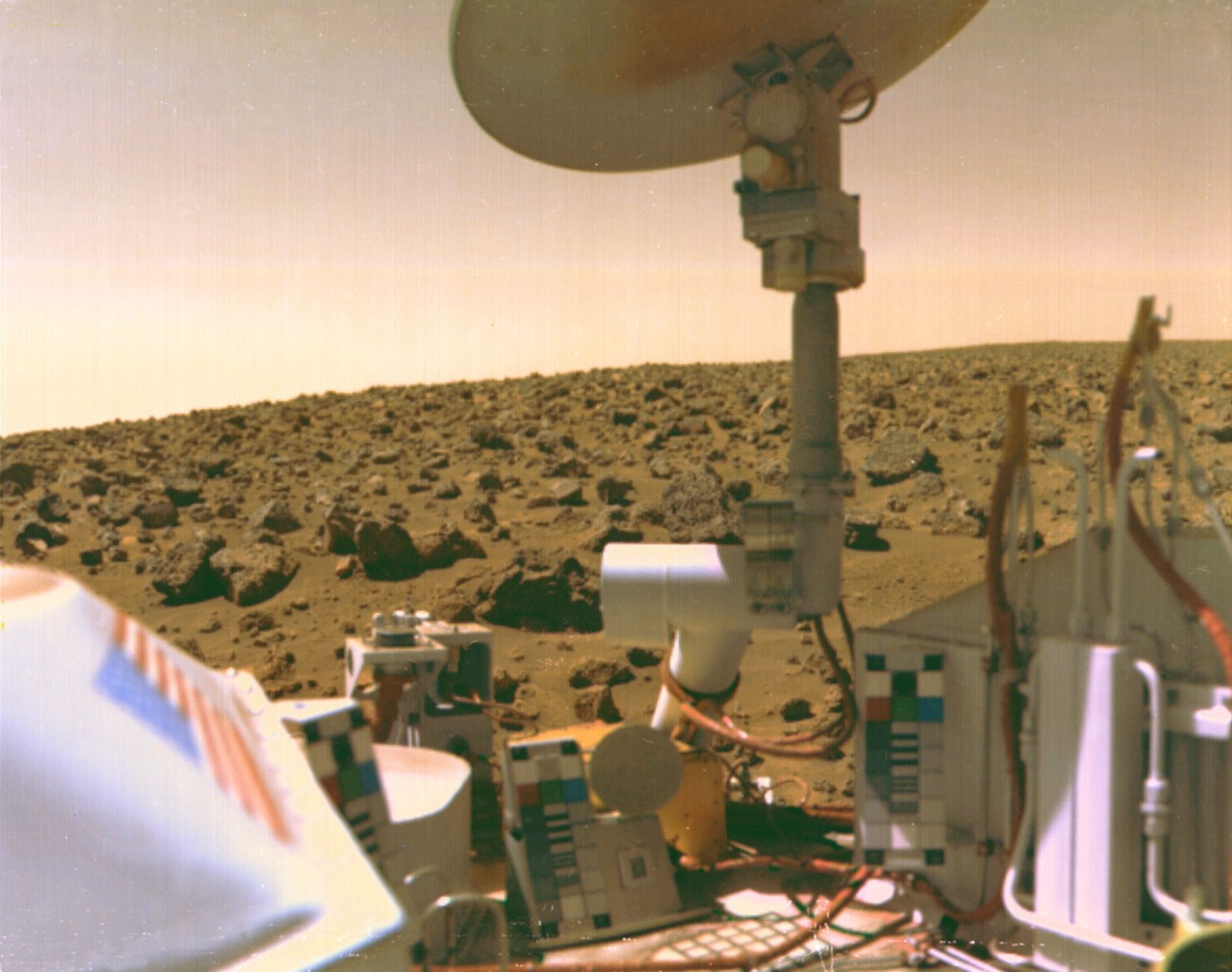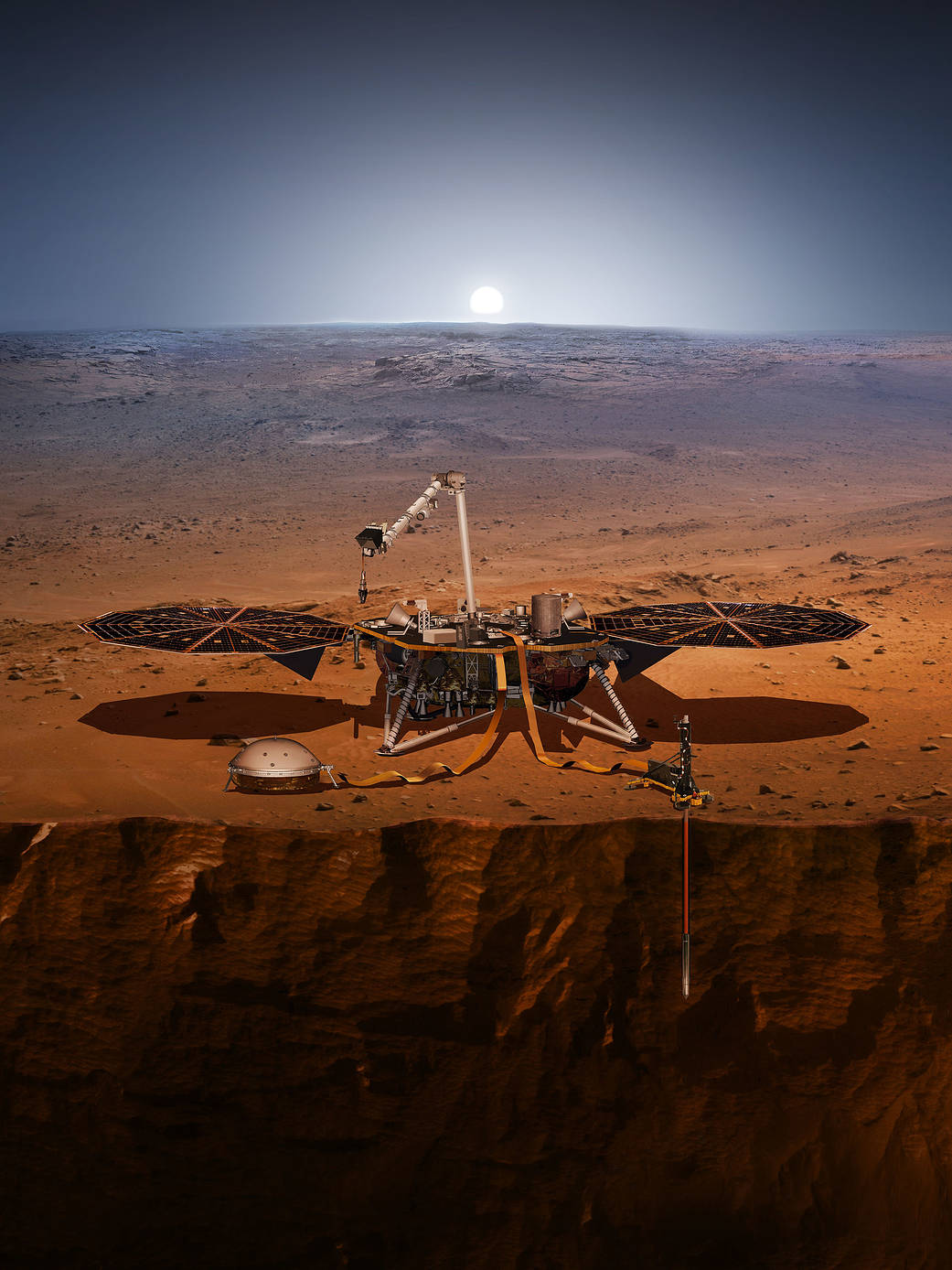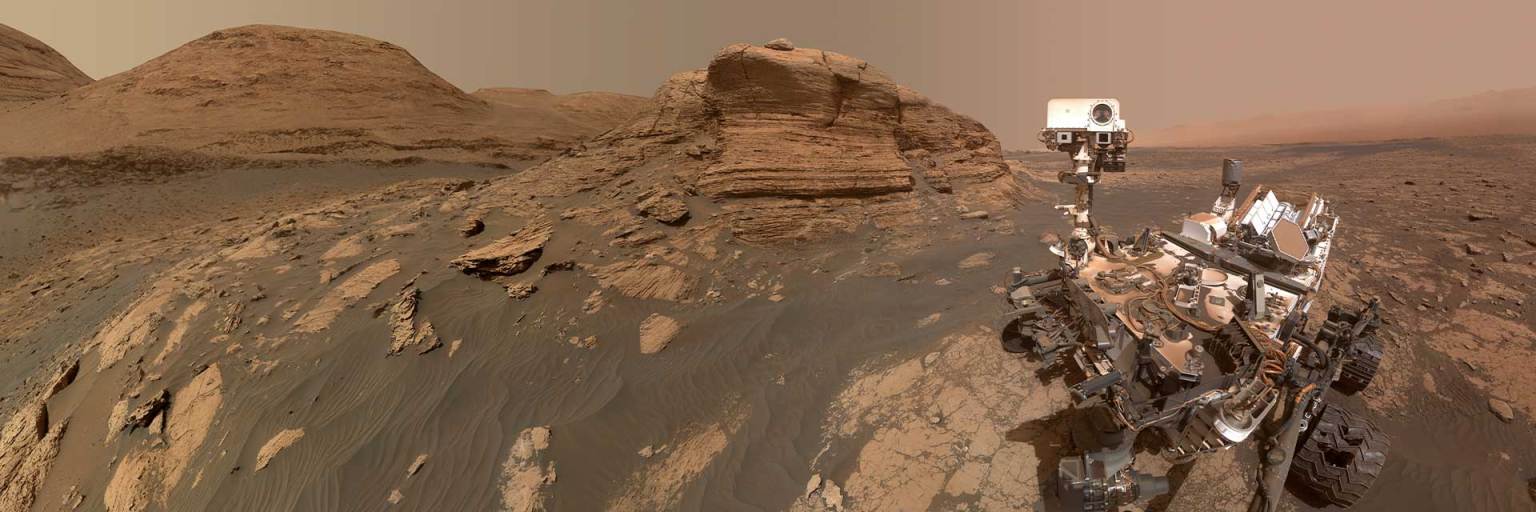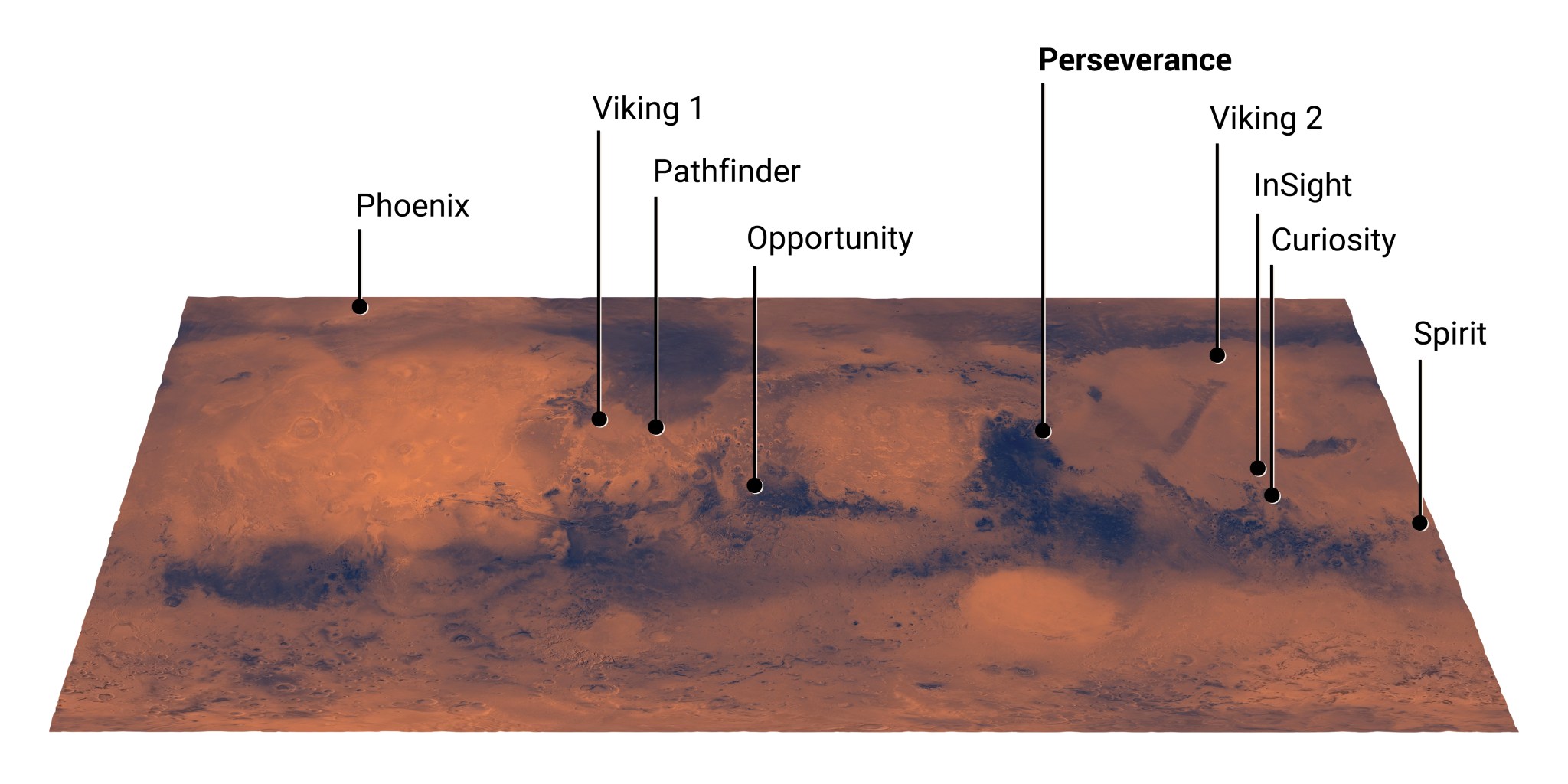
‘Seven Minutes of Terror’
The prospect of landing on Mars, long considered the stuff of science fiction, has become a reality over the past half century, thanks to human imagination, expertise, and persistence.
NASA has led the way with multiple missions that have landed safely on the Red Planet. Some of the landings have dispatched rovers to travel around the Martian surface, and some have served as stationary explorers, each gathering data and images from a specific landing site. They all have one thing in common: landing them on Mars requires intensive planning and expertise, to maximize the prospects of a safe and successful arrival.
A whole host of things have to go precisely as planned for landing success. This tense process, known as Entry, Descent, and Landing, or EDL, has been referred to with such phrases as “seven minutes of terror.”
‘It is the result of reasoned engineering. ...But it still looks crazy.’
NASA engineers who designed the Curiosity Mars rover's entry, descent, and landing system talk candidly about its features, including a new element — the sky crane, also used later for Perseverance — and describe the challenges of Curiosity's final moments before touchdown.
Learn More About CuriosityChoosing How and Where to Land
“Each new lander or rover mission has presented new landing-system design challenges not faced by the ones that came before," said Rob Manning, an engineering fellow at NASA’s Jet Propulsion Laboratory in Southern California. Manning has worked on all NASA Mars rovers and landers since Pathfinder in 1997.
"The Viking team had minimal landing-site information before sending the spacecraft to Mars. After their success, the next challenge was lowering the costs, which spawned the idea of using air bags for Mars Pathfinder, and that success then also enabled the Spirit and Opportunity rovers to land,” he said. After that, for Curiosity and Perseverance, “bigger rovers with grander capabilities, we had to invent the sky crane maneuver, and then new navigation techniques that enabled us to land at sites previously considered too risky."
When choosing a landing site, scientists conduct a rigorous pre-launch process to identify a location with terrain safe for landing, but with the right features to address mission goals of science discovery and help pave the way for future robotic missions, and potentially, future Mars astronauts. This “Mars in a Minute” video explains:
Credit: NASA/JPL-Caltech
Stationary Landers
Viking 1 and Viking 2
The twin Vikings were the first two U.S. spacecraft to land safely on Mars. Each was transported separately to the Red Planet by its own orbiting spacecraft, which released the lander it was carrying when it was time to begin the landing process. Both landers touched down north of the Mars equator, with Viking 1 in Chryse Planitia, and Viking 2 in Utopia Planitia. Renowned astronomer Carl Sagan helped choose the landing sites. Viking 1 landed on Mars on July 20, 1976, followed by Viking 2 on Sept. 3, 1976.
Each Viking had three triangular leg structures. Each leg was configured as an inverted tripod with three struts, and a skirted footpad. Once each orbiter was safely in orbit around Mars, the orbiter dropped the lander, and lifting aeroshells helped lengthen the entry, descent, and landing timeline. To slow the descent, the Vikings used the same type of parachutes we still use on Mars missions. Liquid-fueled, adjustable rocket engines were used for the final descent, while Doppler radars controlled the speed at crucial points in the landing process.
The Vikings' successful landings created a heritage adapted for future landers. While Mars Phoenix and Mars Insight appear to be closest to the Vikings' heritage, all the subsequent NASA Mars landers have been heavily influenced by the Viking design — from entry (heat shields), to descent (parachutes), terminal descent (radars), and landing.
Mars Phoenix Lander
The Mars Phoenix lander, designed to search for evidence of past or present microbial life, touched down in the Martian arctic area of Vastitas Borealis on May 25, 2008, using technologies inherited from the Viking spacecraft, with some upgrades. It was, in fact, the first successful landing of a stationary soft-lander on Mars since Viking 2 landed 32 years earlier.
Phoenix was designed with 12 on/off pulsed thrusters mounted around its bottom edge, to slow descent during the final 30 seconds before the legs touched the Martian surface.
Mars InSight
The Mars InSight Lander, which safely touched down on Mars' Elysium Planitia on Nov. 26, 2018, borrowed heavily from past NASA Mars missions, especially the Mars Phoenix Lander 10 years prior. But the entry, descent, and landing system was modified a bit for InSight (Interior Exploration using Seismic Investigations, Geodesy and Heat Transport): It used a thicker heat shield, partly because it was landing during dust-storm season — autumn in the Martian northern hemisphere. And its parachute suspension lines used stronger material.
Mars Landings With Rovers
Mars Pathfinder
July 4, 1997, had an especially exciting element added to the traditional fireworks and gatherings of America's Independence Day celebration. NASA's Mars Pathfinder spacecraft touched down on the Red Planet that day, toting humankind's first-ever Mars rover, Sojourner. The internet, still in its infancy, added an additional layer of interest, providing an opportunity for people around the world to watch fresh images from Mars and live feeds from mission control at NASA's Jet Propulsion Laboratory in Southern California, as history was made.
To land safely with its precious cargo, Pathfinder used a brand-new landing system, much different than its predecessors more than 20 years earlier, Vikings 1 and 2. As Pathfinder descended through the treacherous Martian atmosphere, a parachute and then rockets slowed the lander to a stop, dropping it about 66 feet (20 meters) above the Martian surface. This allowed a giant system of airbags to cushion the landing impact. Pathfinder bounced like a cluster of giant beach balls, more than 16 times and up to 50 feet (15 meters) high. Pathfinder stopped bouncing and settled on the Mars surface about 2½ minutes later, more than half a mile from the initial point of impact. Later, the world continued to watch excitedly as Pathfinder opened its ramp petals and the Sojourner rover rolled down onto the Mars surface.
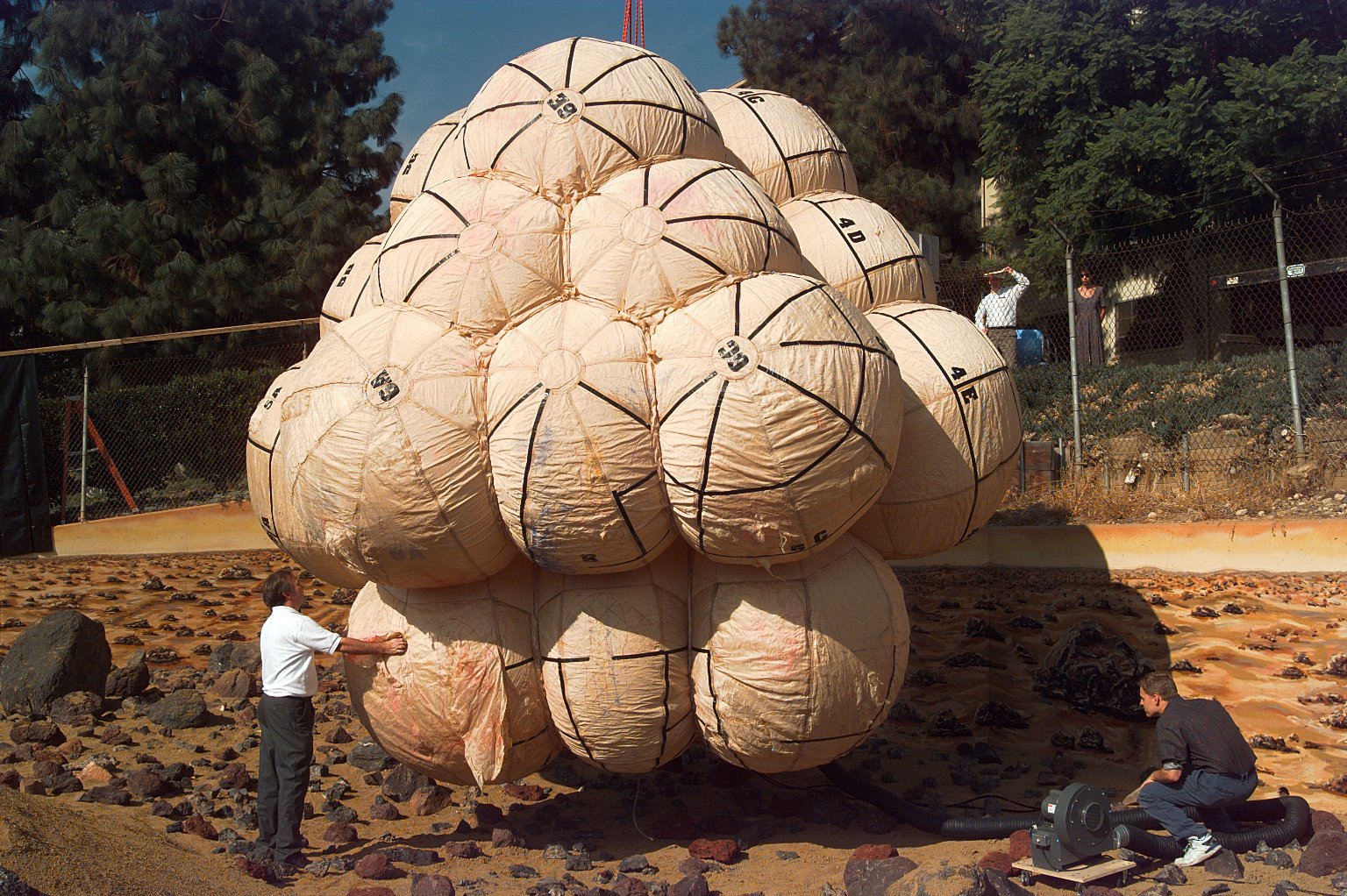
NASA/JPL-Caltech
Mars Exploration Rovers: Spirit and Opportunity
Inspired by the success of Pathfinder and Sojourner, NASA developed twin rovers, Spirit and Opportunity, to land on opposite sides of Mars on two different days — Spirit on Jan. 3, 2004, at Gusev Crater, and Opportunity on Jan. 24, 2004, at Meridiani Planum. The twin rovers used an entry, descent, and landing protocol nearly identical to that used by Pathfinder — with a lander assisted by a parachute, an aeroshell lowering the lander on a tether, firing rockets, inflated airbags to cushion the lander, and deployment of each rover rolling off its lander.

Mars Science Laboratory: Curiosity
The next generation of rovers — Mars Science Laboratory: Curiosity and Mars 2020: Perseverance — used existing entry, descent, and landing technologies, with a new addition. Both eliminated the use of air bags and added an innovative and daring element known as a sky crane.
Due to the size and weight of these new, massive, science-laden rovers (more than a ton, or about 1,000 kilograms), an air bag-assisted landing would simply not be an option. Likewise, the complexity of getting a massive rover off a large-legged lander would make that choice too difficult and too heavy. Instead, engineers combined the best features of a propulsively controlled lander, like Viking, and the separation of the rover from the descent propulsion, used by Pathfinder, Spirit, and Opportunity. As a result, Curiosity and Perseverance used the sky crane maneuver. A new, separate, propulsive descent stage was placed above the rover to help guide the vehicle during entry, but also to serve as a payload delivery system, lowering the rover to the surface directly and softly onto its wheels. This method is very similar to the way helicopters maneuver heavy payloads on Earth.

On landing day, Aug. 5, 2012 PDT (Aug. 6 EDT), the sky crane maneuver lowered Curiosity to the Mars surface from the descent stage on three cables. This added element occurred during a crucial time, with only seven minutes to get from the top of the Martian atmosphere to the Mars surface — going from 13,000 mph to zero, with perfect sequence, choreography, and timing, all done autonomously by a computer. Thus, the name "Seven Minutes of Terror," as the mission engineers described the daring process required to deliver Curiosity safely to Gale Crater on Mars.
Mars 2020: Perseverance
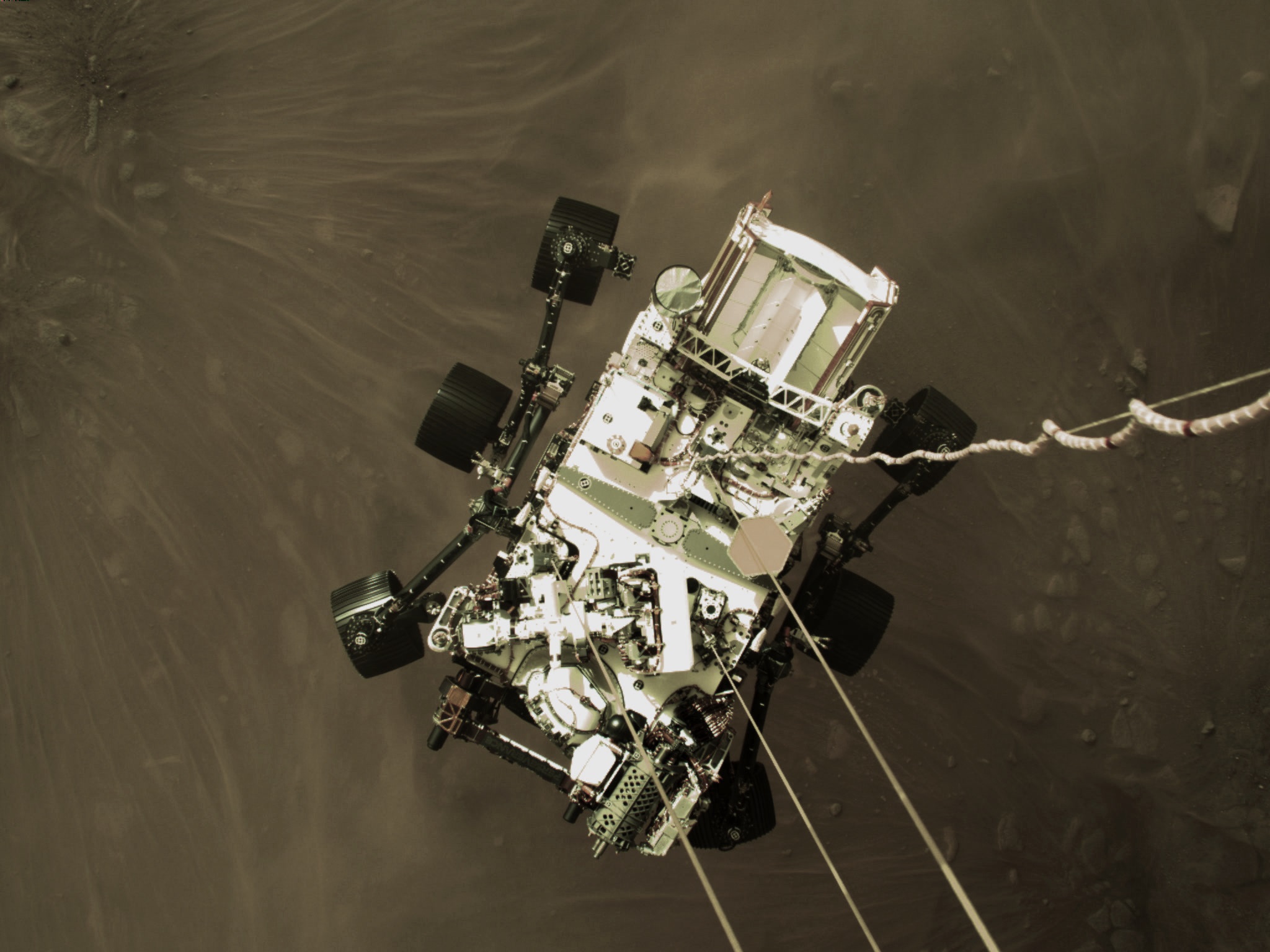
For the Mars 2020 Perseverance rover, which landed Feb. 18, 2021 in Jezero Crater, engineers chose to reuse the sky crane system that had successfully landed the Curiosity rover in 2012.
One additional factor came into play: The Jezero Crater landing site was in the most challenging Mars terrain ever targeted, with an ancient river delta, steep cliffs, sand dunes, boulder fields, and smaller impact craters. Landing in such a treacherous site required greater precision and a way to assure safe touchdown, with the reward of exploring an area that scientists believe may have been hospitable to ancient life.
Two new entry, descent, and landing technologies were needed.
The first addition was called Range Trigger. As the time during entry when parachute deployment neared, the onboard software autonomously updated the parachute deployment time based on its position.
With the craft flying nearly sideways at supersonic speeds, the parachute could serve as a brake — when opened at the exact moment — to stop the horizontal motion precisely over the landing target. This trick enabled the science team to consider smaller, more precise, more daring landing sites such as Jezero Crater.
To find a safe place to land in a hazardous region, a second addition was needed. For the first time, a Mars lander needed to "look out the window" to figure out where it was on an onboard map. Enter another new technology: Terrain-Relative Navigation. It took pictures while descending to autonomously recognize Mars landmark features, estimate spacecraft position, and re-target the craft for precise, safe landing. The system also included the Lander Vision System, to capture and analyze a rapid series of photos to pinpoint the spacecraft's location, matching them to patterns in its map and helping to differentiate between safe sites and hazardous sites.
As Perseverance's descent stage slowed about 12 seconds and 66 feet (20 meters) above the Martian surface, it initiated the sky-crane maneuver. The descent stage lowered the rover on cables, and when the rover sensed that its wheels had touched the ground, it quickly cut the cables to the descent stage, which flew off to land at a safe distance from the rover.
The signals relaying all that took 11 minutes to reach the control room at NASA JPL. Then, amid the cheers and elation of her colleagues, Swati Mohan, the Mars 2020 guidance, navigation, and control operations lead announced to the world: “Touchdown confirmed. Perseverance safely on the surface of Mars, ready to begin seeking the signs of past life.”
‘Tango Delta. Touchdown confirmed!’
Views and commentary from mission control at NASA's Jet Propulsion Laboratory on Feb. 18, 2021, as the Mars 2020 Perseverance mission lands on Mars. Video includes footage from cameras on the spacecraft's entry, descent, and landing suite as it approached the Martian surface.
Learn More About the Mars 2020 Mission




























